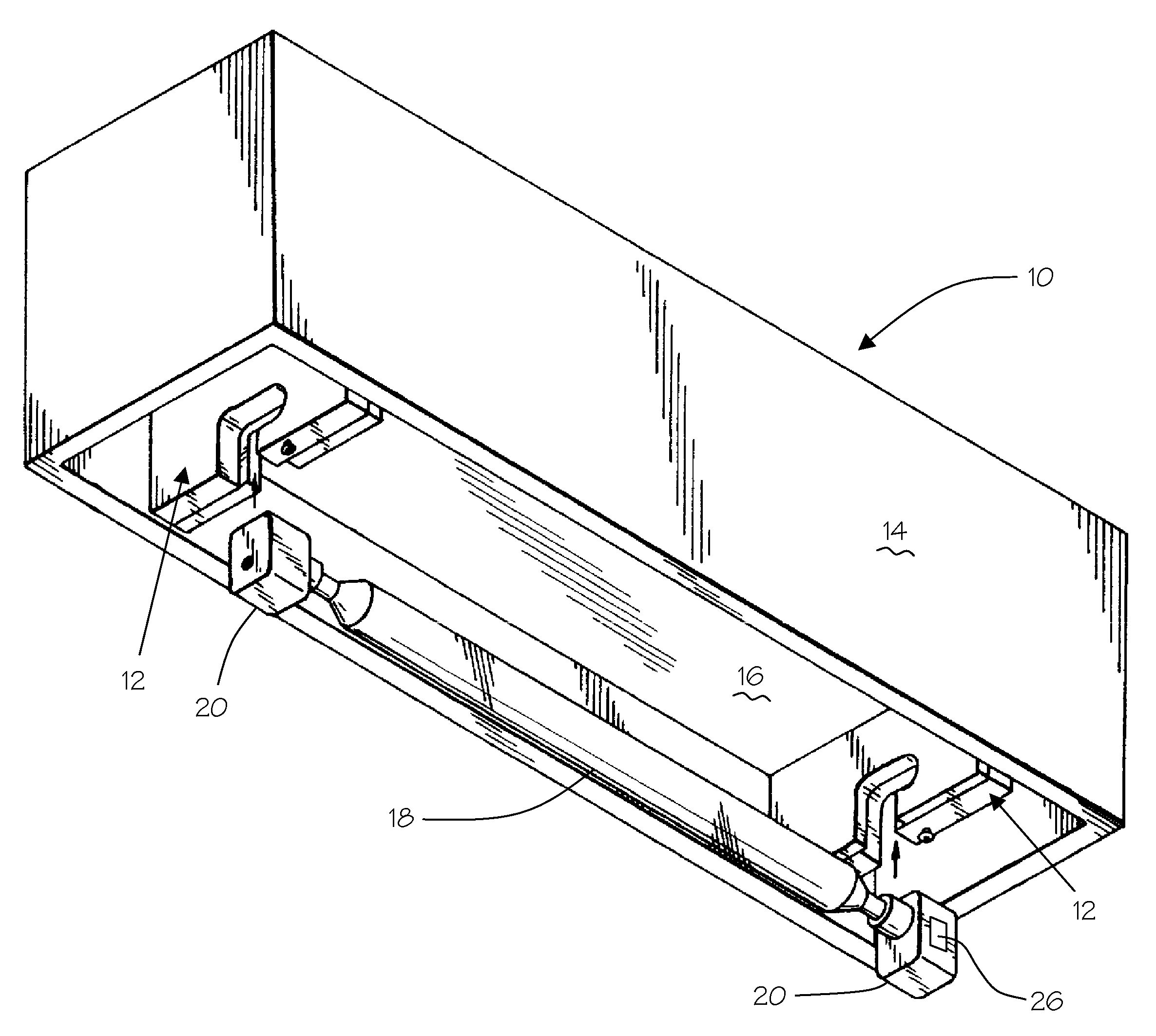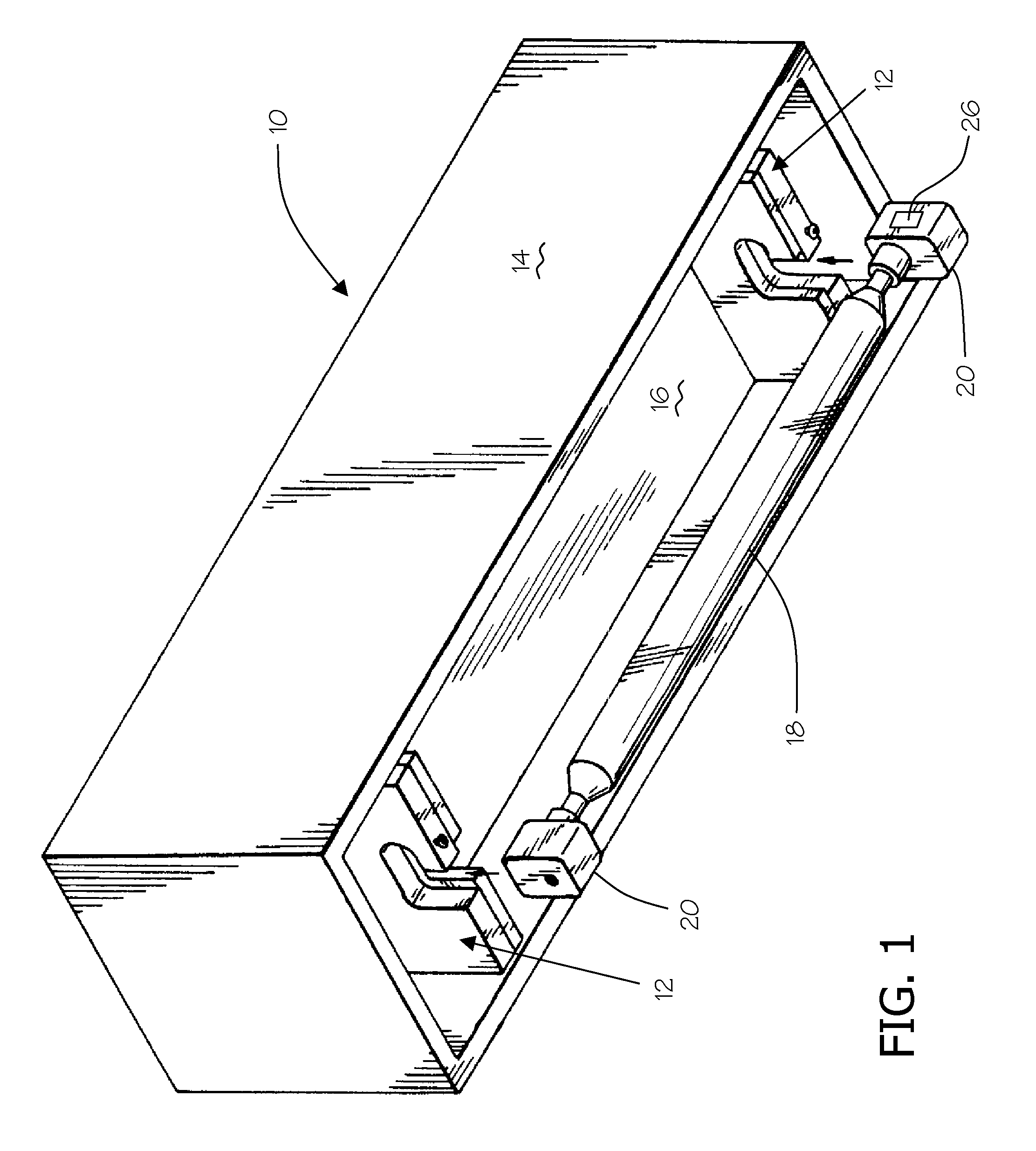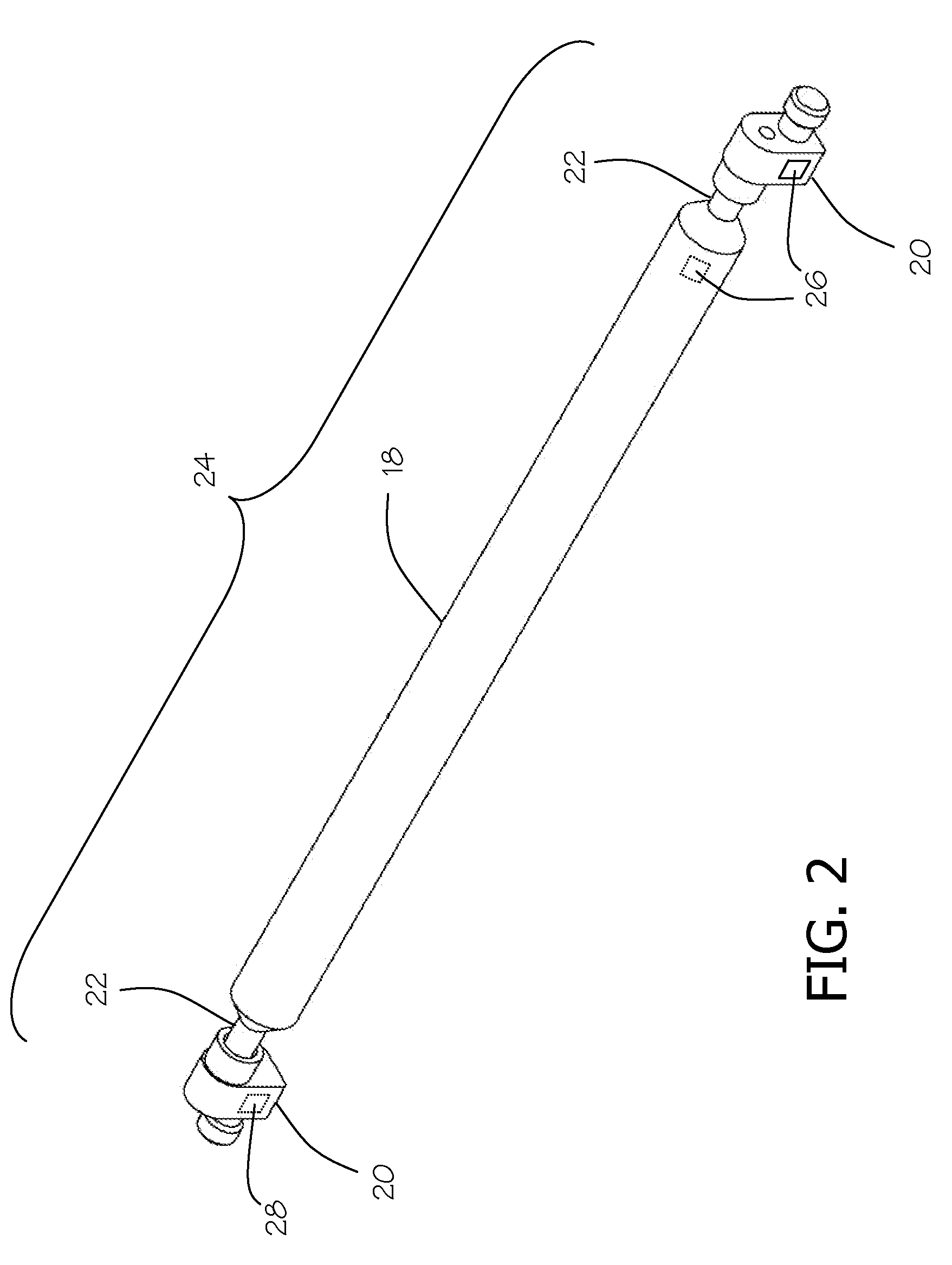Lamp assemblies, lamp systems, and methods of operating lamp systems
a lamp system and lamp assembly technology, applied in the field of lamp systems, can solve the problems of reducing production efficiency, difficulty in determining how many hours the operator of the lamp system has been historically operated, and inability to determine the number of hours of operation, so as to achieve accurate tracking and be easily portable
- Summary
- Abstract
- Description
- Claims
- Application Information
AI Technical Summary
Benefits of technology
Problems solved by technology
Method used
Image
Examples
Embodiment Construction
[0024]Turning to the drawings, wherein like numbers denote like parts throughout the several views, FIGS. 1 and 2 show an exemplary lamp head 10 that incorporates a lamp-retaining device 12. The lamp head 10 also includes a lamp housing 14 which may be operatively connected to a source of cooling water and a source of electricity (diagramatically shown in FIG. 3). In some configurations, the lamp housing 14 may include a water cooled section 16 which is operatively connected to the source of cooling water. The water cooled section 16 serves to cool the lamp head 10 while it is operational, such as during a curing application. The lamp system further includes a lamp assembly 24 which is selectively removable from the lamp retaining device 12 in the lamp head 10. The lamp head 10 may include a reflector (not shown), which includes a reflective surface partially surrounding the lamp 18 for reflecting radiation onto a substrate.
[0025]The lamp assembly 24 includes lamp 18 and end fixture...
PUM
 Login to View More
Login to View More Abstract
Description
Claims
Application Information
 Login to View More
Login to View More - R&D
- Intellectual Property
- Life Sciences
- Materials
- Tech Scout
- Unparalleled Data Quality
- Higher Quality Content
- 60% Fewer Hallucinations
Browse by: Latest US Patents, China's latest patents, Technical Efficacy Thesaurus, Application Domain, Technology Topic, Popular Technical Reports.
© 2025 PatSnap. All rights reserved.Legal|Privacy policy|Modern Slavery Act Transparency Statement|Sitemap|About US| Contact US: help@patsnap.com



